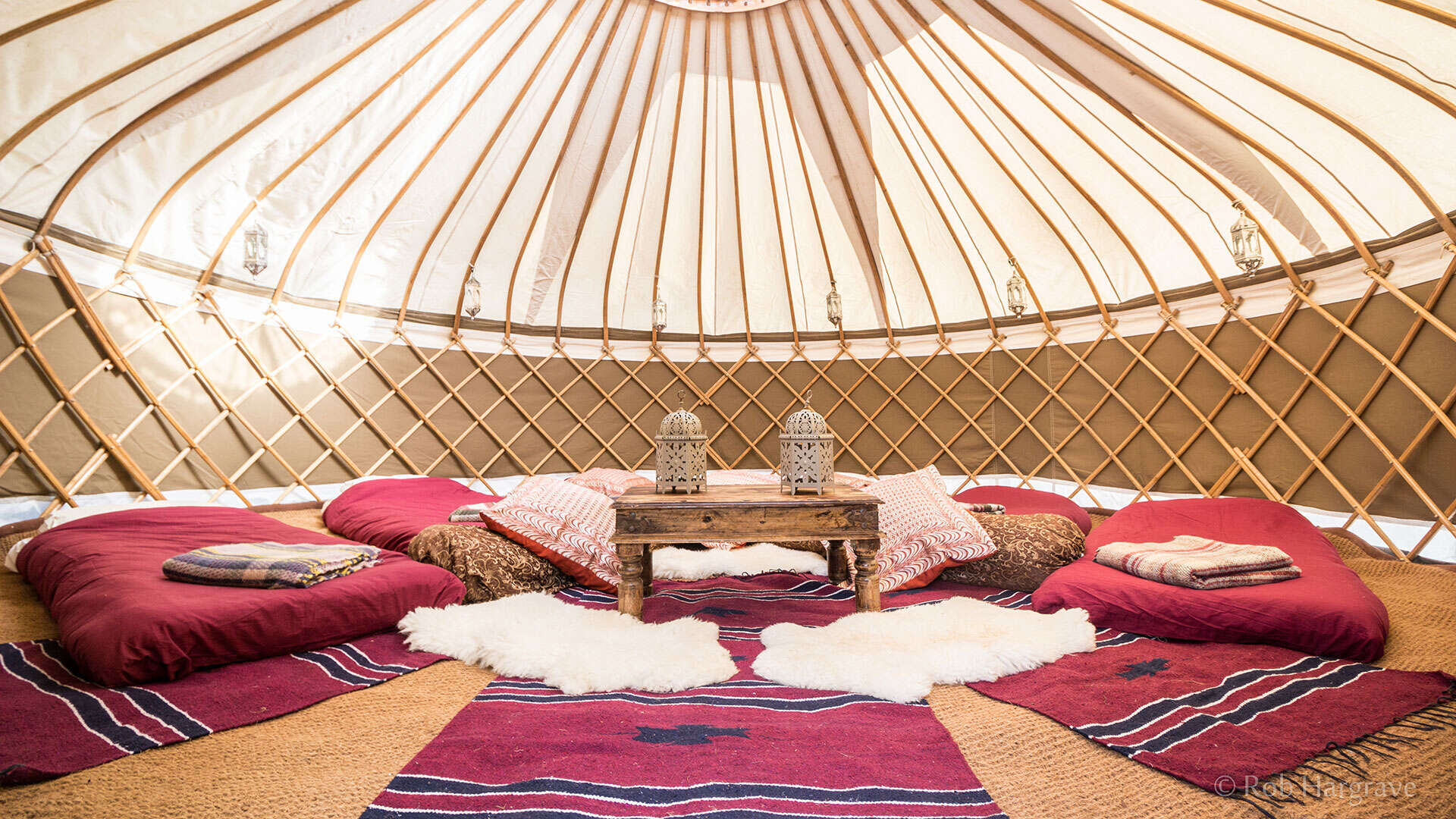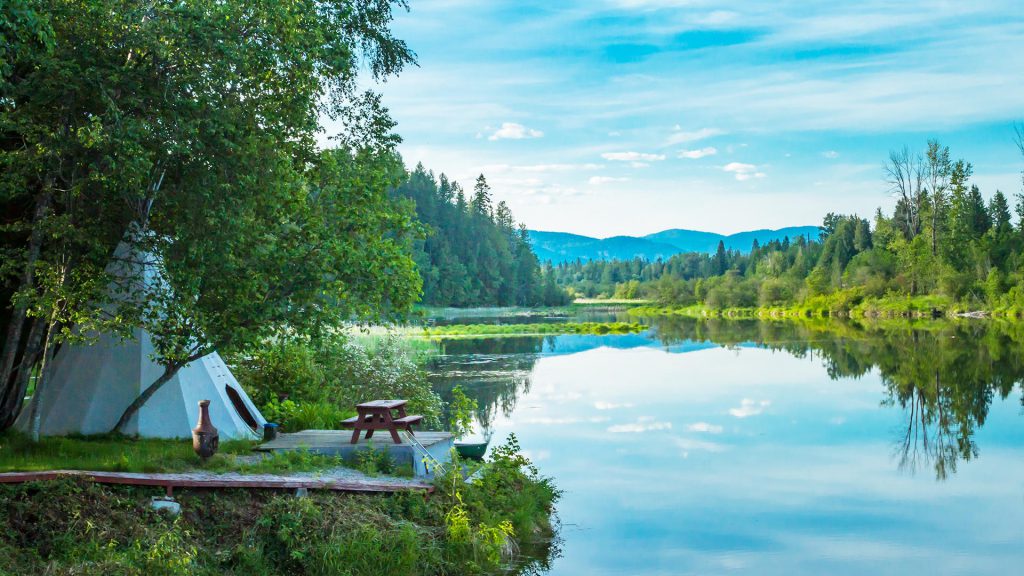
Tara Weightman, Hearthworks founder and curator of the Glastonbury Tipi Field talks about the pressures and pitfalls, requirements and rewards in setting up your own glampsite.
The pandemic has affected the event industry more than most, with small independent businesses adapting to survive. While larger-scale gatherings, like festivals, were forced to take a hiatus, one of the areas of growth has been the glamping sector. Here are my tips for setting up a glampsite.
Location is key. For example, capitalising on existing landscape features – beaches, forests, local attractions. It could be an already established holiday destination, a remote area away from the crowds, or even very close to a popular urban area with plenty of facilities.
The site-specific elements for setup all need considering, especially access and water. Other important considerations include parking, pathways, drainage, electricity, recycling, waste and wifi.
Tent camping is permissible for at least 28 days in the calendar year. However, exceptions exist, including joining an organisation such as the Camping and Caravanning Club or using garden land. You can apply for planning permission for a campsite license, although it’s possible to start a temporary campsite (for 42 consecutive days) with no licence required.
Should you buy in your accommodation or hire it from a supplier? If you are DIYing it, keep it as simple as possible – a small number of units to start. Get to know and understand the accommodation and learn how to maintain it. For larger sites or something more high-end, getting a supplier on board can be a great way to hit the ground running and it allows you to focus on other key elements, such as marketing or hospitality.
Get to grips with potential pitfalls and make sure everything is fully costed up. Under budgeting overheads and running costs, can be disastrous. Be aware of hidden costs, e.g. transport to the laundry company. It’s easy to underestimate the cost of staff such as cleaners for the changeovers. If you skimp on these costs, it can be inefficient and hurt your reputation. Don’t rely on full-occupancy revenue as it can be a crowded market in some areas. Keep an eye on the competition’s prices and manage customer expectations so they don’t have a disappointing experience and leave bad reviews. Make sure your marketing is clear, with any written text and pictures. Build community relationships by using local suppliers and staff to counteract any complaints.
To make the glampsite project financially sustainable, you will need to work out the cost of your accommodation units, facilities and all the other overheads. You can then decide what rate to charge or even reconsider the number of units available for rent as this will have quite an impact on the revenue. For example, if you have a 56-day glampsite with 12 units with a predicted 75% occupancy level, then on average 8 units are rented out per night. If the site costs come to £800 per night then you could consider charging £150 per unit per night to achieve a revenue of £1200 per night which would be 1.5 times the cost. Over 56 nights the total sales would be £67,200, the cost of sales would be £44 800 and the profit would be £22 400. Not bad for 2 months in the fields!

